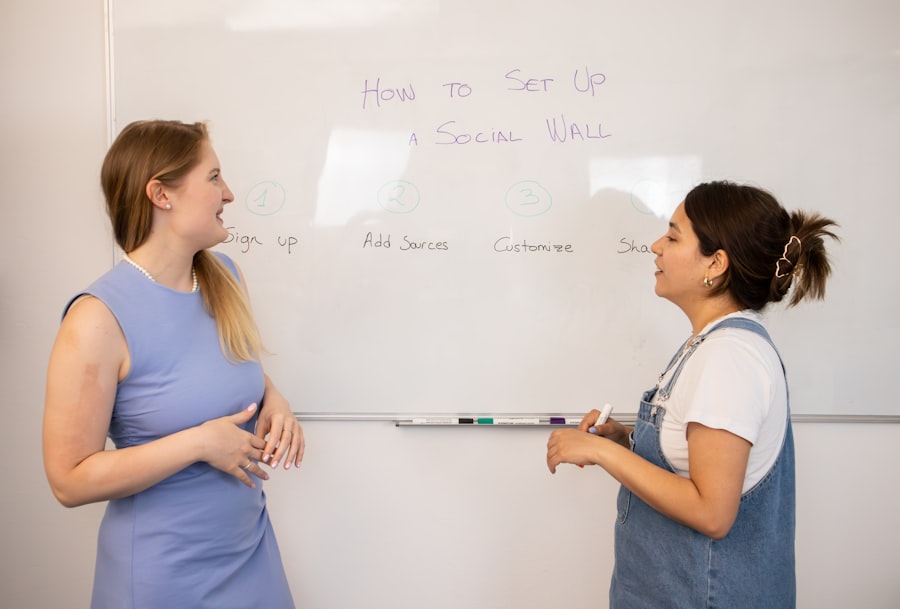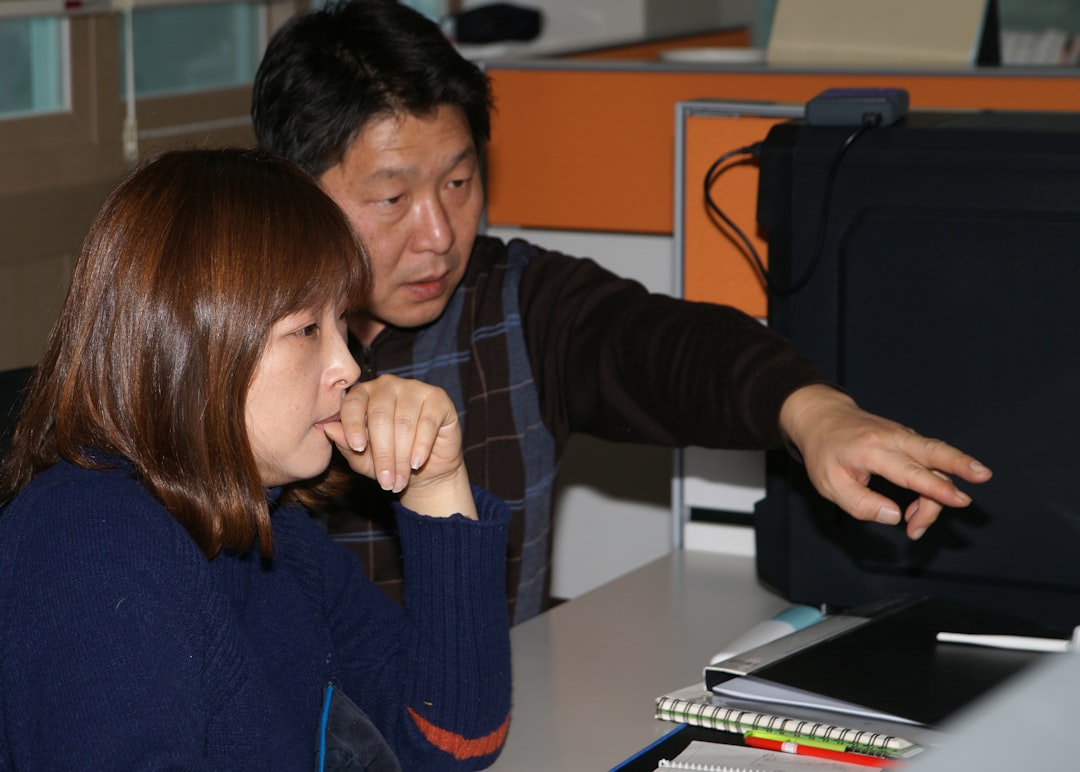As you step into the world of education today, you cannot help but notice the profound impact that artificial intelligence (AI) is having on the learning landscape. AI is no longer a futuristic concept; it has become an integral part of educational systems around the globe. From intelligent tutoring systems to automated grading, AI technologies are reshaping how students learn and how educators teach.
This transformation is not merely about incorporating new tools; it represents a fundamental shift in the educational paradigm, where data-driven insights and personalized learning experiences are becoming the norm. In this rapidly evolving environment, you may find yourself wondering how AI can enhance your educational experience or the experiences of those around you. The integration of AI in education promises to make learning more efficient, accessible, and tailored to individual needs.
However, as with any significant change, it brings both opportunities and challenges that require careful consideration. Understanding the multifaceted role of AI in education is essential for navigating this new terrain effectively.
Key Takeaways
- AI in education has the potential to revolutionize the way students learn and teachers teach.
- The benefits of AI in education include personalized learning, improved student engagement, and more efficient administrative tasks.
- AI plays a crucial role in personalized learning by providing tailored content and feedback to individual students.
- While AI may impact teaching jobs, it also has the potential to enhance teaching practices and support educators in their roles.
- Concerns and challenges of AI in education include data privacy, equity in access to AI tools, and the potential for over-reliance on technology.
The Benefits of AI in Education
One of the most compelling advantages of AI in education is its ability to streamline administrative tasks, allowing educators to focus more on teaching and less on paperwork. Imagine a world where grading assignments and managing student records are automated, freeing up valuable time for teachers to engage with their students. This efficiency not only enhances productivity but also allows for a more meaningful interaction between educators and learners.
With AI handling routine tasks, you can expect a more dynamic classroom environment where creativity and critical thinking take center stage.
Picture a scenario where a student struggles with a particular concept; AI-powered tools can analyze their performance in real-time and offer tailored resources or exercises to address their specific needs.
This level of responsiveness ensures that no student falls behind, fostering a more inclusive learning atmosphere. As you explore the benefits of AI, it becomes clear that its potential to improve educational outcomes is vast and varied.
The Role of AI in Personalized Learning

Personalized learning is one of the most exciting applications of AI in education. You may have experienced traditional teaching methods that often adopt a one-size-fits-all approach, which can leave some students feeling disengaged or overwhelmed. With AI, however, the focus shifts to individual learning paths tailored to each student’s unique strengths and weaknesses.
By analyzing data on student performance, AI systems can create customized learning experiences that adapt in real-time, ensuring that you or your peers receive the support needed to thrive. Imagine being able to learn at your own pace, with resources that align perfectly with your interests and learning style. AI can curate content that resonates with you, making the educational journey not only more enjoyable but also more effective.
This personalized approach empowers you to take ownership of your learning, fostering a sense of autonomy and motivation that traditional methods often lack. As you delve deeper into personalized learning through AI, you’ll discover how it can transform the educational experience for students of all ages.
The Impact of AI on Teaching Jobs
| Metrics | Data |
|---|---|
| Number of teaching jobs at risk | 1.5 million |
| Percentage of teaching tasks that can be automated | 30% |
| Projected growth of AI in education sector | 47% by 2027 |
| Impact on demand for teachers | Decrease by 8% by 2030 |
As AI continues to permeate the educational landscape, it raises important questions about its impact on teaching jobs. You might be concerned about the potential for automation to replace educators, leading to job displacement in the field. However, it’s essential to recognize that while AI can perform certain tasks traditionally handled by teachers, it cannot replicate the human elements that are crucial to effective teaching.
The role of an educator extends far beyond delivering content; it involves mentorship, emotional support, and fostering a sense of community within the classroom. In fact, rather than replacing teachers, AI has the potential to enhance their roles by providing valuable insights into student performance and engagement. With access to data-driven analytics, you can better understand your students’ needs and tailor your teaching strategies accordingly.
This collaboration between AI and educators can lead to more effective teaching practices and improved student outcomes. As you consider the future of teaching jobs in an AI-driven world, it’s clear that the human touch will remain irreplaceable.
The Concerns and Challenges of AI in Education
Despite the numerous benefits that AI brings to education, there are valid concerns and challenges that must be addressed. One significant issue is data privacy; as educational institutions increasingly rely on AI systems that collect vast amounts of student data, safeguarding this information becomes paramount. You may worry about how your personal data is being used and whether it could be vulnerable to breaches or misuse.
Ensuring robust data protection measures is essential for building trust in AI technologies within educational settings. Another challenge lies in the potential for bias in AI algorithms. If not carefully designed and monitored, these systems can inadvertently perpetuate existing inequalities or reinforce stereotypes.
As you engage with AI tools in education, it’s crucial to remain vigilant about their implications and advocate for fairness and inclusivity in their development. By addressing these concerns head-on, you can contribute to creating an educational environment where AI serves as a force for good rather than a source of division.
The Future of Teaching with AI

Looking ahead, the future of teaching with AI holds immense promise. You may envision classrooms where technology seamlessly integrates with pedagogy, creating enriched learning experiences for students. As AI continues to evolve, it will likely play an even more significant role in shaping curricula and instructional methods.
Imagine virtual reality simulations that allow students to explore historical events or complex scientific concepts in immersive ways—AI will be at the forefront of these innovations. Moreover, as educational institutions embrace AI-driven tools, there will be opportunities for collaboration between educators and technology developers. You could find yourself participating in discussions about how best to leverage AI for educational purposes, ensuring that these tools align with pedagogical goals and enhance student learning outcomes.
The future of teaching with AI is not just about adopting new technologies; it’s about reimagining what education can be when human creativity and technological innovation work hand in hand.
The Role of Teachers in the Age of AI
In an age increasingly defined by artificial intelligence, the role of teachers is evolving rather than diminishing. You may find that educators are becoming facilitators of learning rather than mere transmitters of knowledge. With AI handling routine tasks and providing personalized insights into student performance, teachers can focus on fostering critical thinking skills, creativity, and emotional intelligence among their students.
This shift allows you to engage more deeply with your learners and cultivate a supportive classroom environment. Furthermore, teachers will play a crucial role in guiding students through the complexities of an AI-driven world. As technology continues to advance at a rapid pace, you will need to help students navigate ethical considerations and develop digital literacy skills essential for success in the 21st century.
By embracing this new role as mentors and guides, educators can empower students to become informed citizens who can critically assess technology’s impact on society.
How AI Can Enhance Teaching Practices
AI has the potential to revolutionize teaching practices by providing educators with powerful tools that enhance instruction and engagement. You might find yourself utilizing AI-driven platforms that offer real-time analytics on student performance, enabling you to identify areas where additional support is needed quickly. This data-driven approach allows for timely interventions that can significantly improve student outcomes.
Additionally, AI can facilitate collaborative learning experiences by connecting students with peers across the globe. Imagine your classroom engaging in projects with students from different cultures or backgrounds through virtual platforms powered by AI technology. These interactions not only enrich the learning experience but also promote cultural understanding and global citizenship among students.
As you explore how AI can enhance teaching practices, you’ll discover new ways to inspire and engage your learners.
The Ethical Considerations of AI in Education
As you navigate the integration of AI into education, ethical considerations must remain at the forefront of discussions surrounding its implementation. Issues such as data privacy, algorithmic bias, and equitable access to technology are critical factors that require careful attention. You may feel compelled to advocate for policies that prioritize ethical standards in the development and deployment of AI tools within educational settings.
You might consider engaging in conversations about how decisions are made within these systems and advocating for accountability measures that ensure fairness and inclusivity. By addressing these ethical considerations proactively, you can contribute to creating an educational landscape where technology serves as a positive force for all learners.
The Importance of Human Connection in Education
While technology undoubtedly plays a vital role in modern education, it is essential not to overlook the importance of human connection in the learning process. You may have experienced firsthand how meaningful relationships with teachers and peers can significantly impact your educational journey. The emotional support and encouragement provided by educators cannot be replicated by machines; they are fundamental to fostering a positive learning environment.
As you embrace the advancements brought about by AI, it’s crucial to maintain a balance between technology and human interaction. Encouraging collaboration among students and promoting open communication within classrooms will ensure that technology enhances rather than replaces the human elements essential for effective learning. By prioritizing human connection alongside technological innovation, you can create an enriching educational experience that nurtures both academic growth and emotional well-being.
Balancing AI and Human Teaching in Education
In conclusion, as you reflect on the integration of artificial intelligence into education, it becomes clear that finding a balance between technology and human teaching is paramount for success. While AI offers numerous benefits—such as personalized learning experiences and streamlined administrative tasks—it cannot replace the invaluable contributions made by educators who inspire and guide students through their academic journeys. As you navigate this evolving landscape, consider how you can leverage AI tools while prioritizing meaningful connections with your students.
By embracing both technological advancements and the irreplaceable human touch inherent in teaching, you can contribute to an educational environment that fosters growth, creativity, and inclusivity for all learners. The future of education lies not solely in artificial intelligence but in harmonizing its capabilities with the profound impact of human connection—creating a richer learning experience for everyone involved.
In the ongoing debate about whether AI will take over teaching jobs, it’s essential to consider the nuanced perspectives on the role of technology in education. An insightful article on this topic can be found on How Wealth Grows, which explores the potential and limitations of AI in the classroom. The article discusses how AI can complement traditional teaching methods rather than replace educators entirely, emphasizing the importance of human interaction in learning. For a deeper understanding, you can read more about this perspective by visiting the article on How Wealth Grows.
FAQs
What is AI?
AI, or artificial intelligence, refers to the simulation of human intelligence in machines that are programmed to think and act like humans. This includes tasks such as learning, problem-solving, and decision-making.
Will AI take over teaching jobs?
There is a possibility that AI could take over certain aspects of teaching jobs, particularly in tasks that involve repetitive and routine activities. However, it is unlikely that AI will completely replace human teachers, as the role of a teacher involves complex interactions and emotional intelligence that AI cannot fully replicate.
How is AI currently being used in education?
AI is currently being used in education to personalize learning experiences for students, automate administrative tasks for teachers, and provide additional support for students with special needs. It is also being used to analyze student data and provide insights for educators to improve their teaching methods.
What are the potential benefits of AI in education?
The potential benefits of AI in education include personalized learning experiences for students, improved efficiency in administrative tasks, and the ability to analyze large amounts of data to identify patterns and trends in student performance.
What are the potential drawbacks of AI in education?
Some potential drawbacks of AI in education include concerns about data privacy and security, the potential for bias in AI algorithms, and the displacement of certain teaching jobs. There are also concerns about the over-reliance on technology and the potential for decreased human interaction in the learning process.
